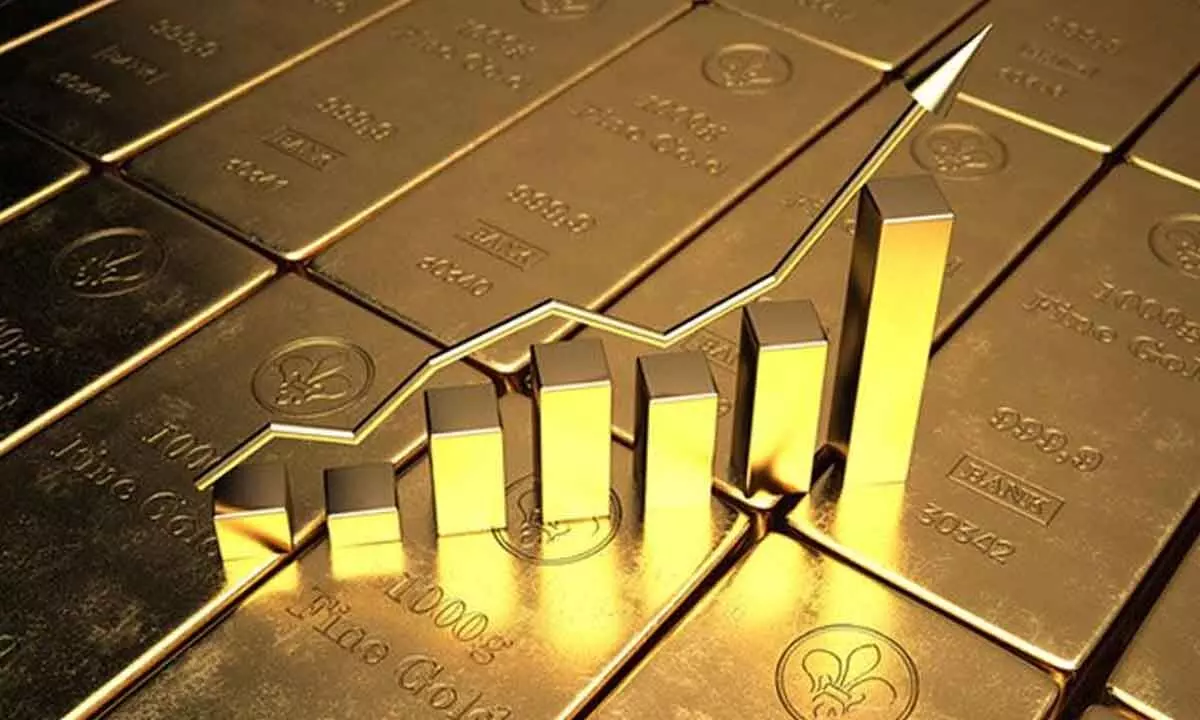Gold investment in India has its own challenges
India is mulling quota-based duty concessions on gold imports from Switzerland under EFTA pact
image for illustrative purpose

Investment demand for gold is likely to get a boost, supported by the favourable domestic economic growth prospects and the trend of growing domestic inflows amidst the prevailing global geopolitical and economic uncertainty
After setting a record close in 2023, gold prices retreated and ended January 1.2% down at $2,053/oz. The strong US dollar, high bond yields and fund outflows from global ETFs were the contributing factors.
Gold imports both in value and volume terms have moderated following the spike in October weighed down by high prices and soft demand for gold jewellery.
Gold imports saw considerable fluctuations in 2023. Monthly import volumes during the year varied between 11t and 121t. However, despite the lower imports in H1 2023 (-17% y/y), the cumulative imports for the year were higher (4% y/y at 742t/ 16% y/y at $42.6bn) in part owing to the substantial imports in October.
As the gems and jewellery industry expects an import duty cut from 15 per cent to 5 percent, it may drag prices lower.
India is mulling giving quota-based duty concessions on gold imports from Switzerland under the proposed free trade agreement European Free Trade Association (EFTA) and has also sought an investment commitment of $50 billion in the first ten years after the implementation of the agreement and another $50 billion in the next five years, officials said.
Switzerland had sought duty concessions on inbound shipments of gold, which accounts for about 80% of India’s total imports from Switzerland.
Quota based concessions to Switzerland are crucial as India has already extended one per cent duty concession to gold importers under tariff rate quota in its trade pact with the UAE.
“Since the UAE already enjoys such concessions, it is important these are extended to EFTA in lieu of investment stability,” said an official.
At present, gold imports are subject to a 12.5% basic customs duty and a 2.5% cess. Gold imports grew 30% on-year to about $38 billion in April-January FY24.
India’s economic growth has been stronger than expected, driven by higher public investment and domestic demand. GDP growth for FY24 has been forecast by the National Statistics Office at a healthy 7.3%. This growth momentum is expected to continue in the coming financial year too (RBI projection of 7% growth in FY25). Consumption has been led by urban demand which is supported by growing income levels and affluence.
Still high prices have been impacting jewellery demand. Anecdotal evidence suggests gold consumer demand has been weak and jewellers are currently trying to reduce stock.
Indian gold jewellery demand is likely to be subdued in the absence of a significant drop in price levels: retailers are not optimistic for any meaningful return in demand over the next couple of months in the absence of a price correction. Moreover, wedding jewellery demand is likely to be tempered given the fewer number of auspicious wedding days in Q1 (16 versus 28 in Q1 2023). A gradual return in retail jewellery demand is expected in early May around the time of Akshaya Tritiya, which is a traditionally considered to be an auspicious period to buy gold. Jewellers too are expected to start accumulating stock ahead of this period.
At the same time, investment demand for gold is likely to get a boost, supported by the favourable domestic economic growth prospects and the trend of growing domestic investment inflows amidst the prevailing global geopolitical and economic uncertainty.
Gold jewellery demand is likely to remain subdued for the next couple of months. A pickup in demand in the near term could be gradual and limited in the absence of a significant drop in price levels. Moreover, this period (February - March) is traditionally a lean period for jewellery sales.
At the same time, investment demand, which accounts for a quarter of consumption demand, is likely to fare better. The prevailing global geopolitical and economic uncertainty, favourable domestic economic prospects and growing investment inflows into the domestic financial markets could support investment demand for gold.
The surge in gold prices, growing appetite for tradeable financial products, increase in capital market investments and need for diversification, geo-political tensions, currency weakness and economic uncertainties have been fuelling the flows into gold ETFs.

